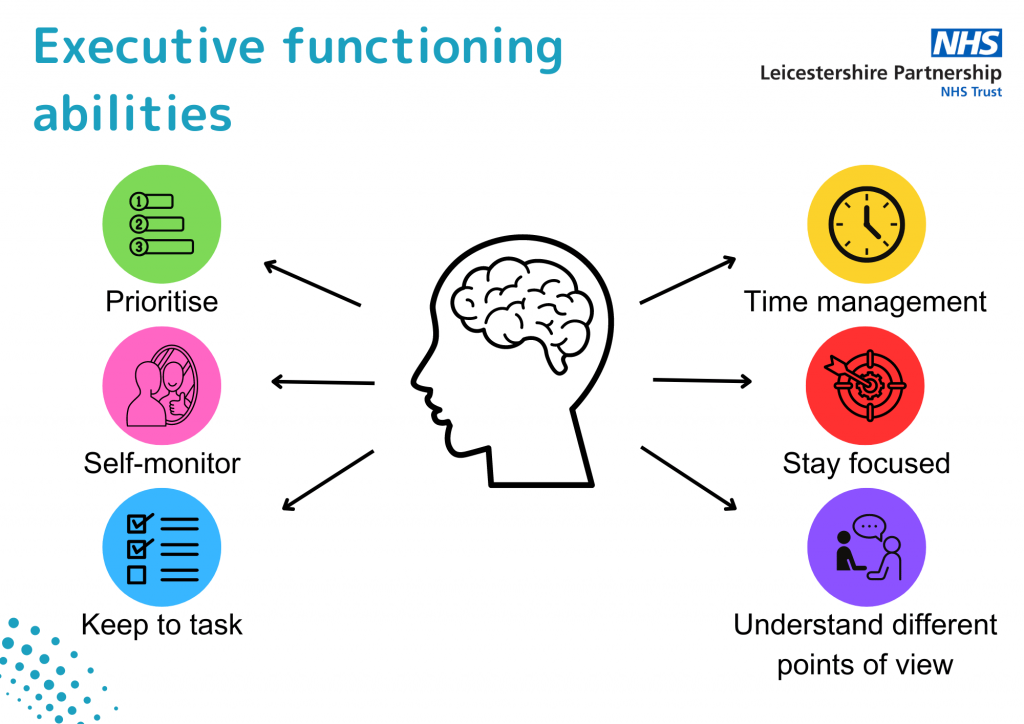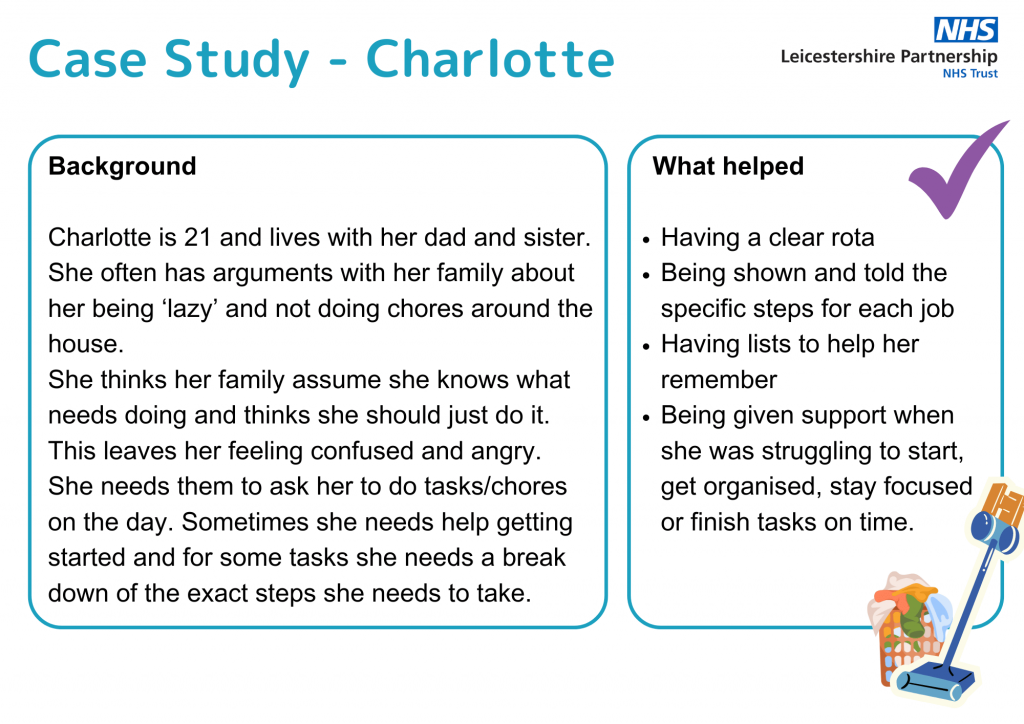They allow you to:
- manage day-to-day tasks
- stay safe
- get things done
Some research suggests that up to 80% of those with autism suffer from executive function disorder, leading to difficulties managing time, completing tasks, and making what might be thought of as simple tasks – like cleaning your room – very complicated or seemingly impossible.
Note: This video was not produced by Leicestershire Partnership NHS Trust and may contain adverts.
What can you do?
There are lots of ways you can try to organise and prioritise daily activities and tasks, and at first you may need others to support you when starting to use the strategies.
It may be that you need to use the strategies in different environments such as home, school or your workplace so other people, such as parents, teachers and work colleagues, can be made aware of these strategies and support you with them.
Over time, you may be able to use the strategies independently, or you may always need some form of support.
Visual aides
A pictorial calendar, for instance, can help to prompt what the daily tasks are and the order they need to be done. Written lists and real objects can all be good ways of helping autistic people understand what is going to happen and when.
For instance a daily timetable that has pictures of a shower, clothes, breakfast, school/work, dinner, toothbrush, pyjamas and bed shows the sequence of that day.
Daily planners and lists
Writing things down step-by step can take away the stress of having to think too hard about each step. Using a mobile device with a calendar or notes which can still be broken down into all the steps that may be needed can also be useful. Creating lists where each task can be ticked off as complete may be another helpful method.
Alarms
Autistic people can often become absorbed in a task and may lose track of time. Alarms are a good way to bring you back to reality and remind you of the next step or task. However, some autistic people may struggle with the sounds of alarms and may prefer to have a vibration or light alarm.
Colour coding
Colours can be used to indicate the importance or significance of tasks, which can then help prioritise the tasks.
For instance, red may be urgent or an essential task that should ALWAYS be completed, green may be tasks to be completed, optional, or those that have no timescale.
If applied to school for instance:
Red indicates- bag, books for that day, homework for that day, lunch, letter replies
Green indicates- homework needed next week or being completed, projects over time, trips
These can be moved from the relevant colours as priorities change.
Communication
Some people may need support in recognising the end goal instead of continuous work and deadlines.
Processing of instructions can be difficult, so it may be useful for parents, teachers or managers to break down instructions into bullet points with clear timelines to help prioritise.
Other ways to help process instructions can include
- use communication books
- online learning environments
- one-to-one recall to ensure full understanding
- emails with instructions to act as a reference
Voice recording
Recording reminders and instructions on a Dictaphone or mobile phone could be a good way to support with organisation and prompting of tasks as you can listen back as often as you want.




